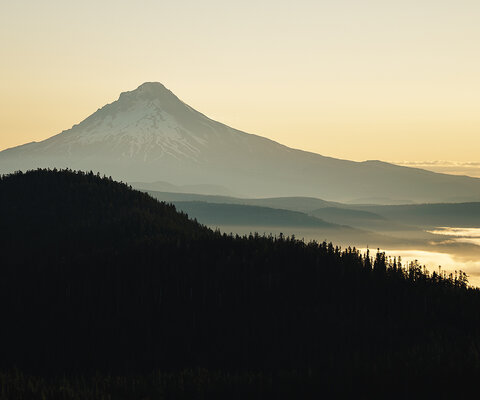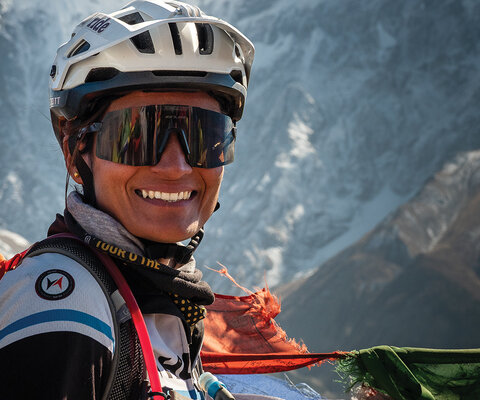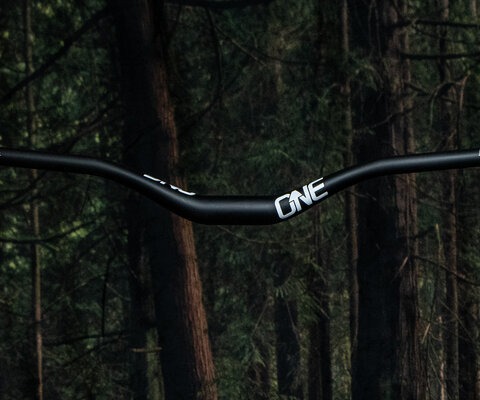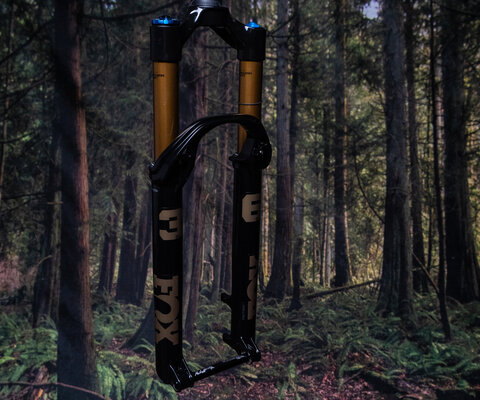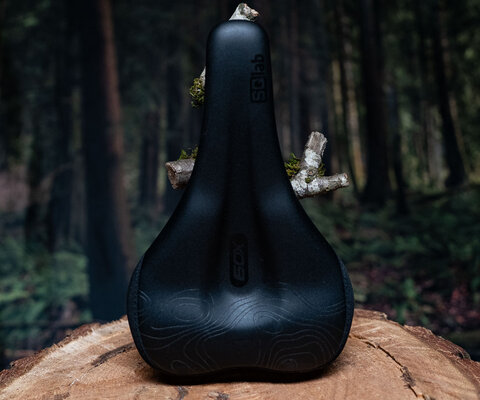#########HEADLINE
“The Wildman, in various manifestations, forms part of the culture and mythology of almost every society since records began”
—Myra Shackley, Still Living? Yeti and Sasquatch and the Neanderthal Enigma
The hunt began as we wound south on Highway 101. Ship-like lumps of rock sat off the cragged shoreline, engulfed in cobalt blue and bubbling foam while thousand-year-old redwoods peered above the eastern hills. Soon we turned up the Trinity River Canyon onto Highway 299, swerving along the twisting roadway that grips the steep hillsides thousands of feet above the river’s scouring rapids. Our group—Freehub crew Chris Grundberg, Brandon Watts and myself—were headed into the heart of Humboldt County, CA, to explore the Earth’s tallest trees, dope-filled forests and plush trails. Called the Lost Coast, it’s also home to some of the most famous and plentiful sightings of the hairy Big Foot, and while we may have been in Humboldt to hunt for trails, our eyes were peeled for the mythical beast. We were in Bigfoot Country.
Eight miles north of where the waters of the Mad River cut out to sea and the coastal redwoods soak up soupy fog lies a small fishing village of Trinidad. It sits tucked in a bay with a few concessions, beach access and bluff views of whales. As the sun dipped out of sight and we arrived at our beachfront digs, we met the rest of our group—local rippers Kyle Warner and Marin Bikes Marketing Manager Tsering Alleyne—and unloaded and prepped the weapons. Ocean froth cut at the earth’s edge into night while the crew traded plots, plans and ideas for the days ahead.
Mystic mountain beasts have played into the folklore of cultures around the globe, from the Himalayan Yeti to the Sasquatch in British Columbia. In the United States, the myth is of a hairy ape-man by the name of Bigfoot. In August of 1958, massive, flat, human-like footprints began showing up around the logging roads of Bluff Creek in the Humboldt. The stir consumed up the Humboldt Times, taxidermists, even the Vancouver Providence, whose staff and audience were lingering with creature fever from a supposed Sasquatch encounter in Ruby Creek, British Columbia 1941. Maybe we had a bit of fever too, but more in the sense of a “Harry And The Henderson’s” road trip. We figured we’d find something weird along these winding roads and dense forests, or at least stumble on a weed farm.
Trail hunting is a strange beast. The easy can be had right there on the spot with a big sign in the parking lot, but the elusive requires more. Internet-rumor, map, a keen eye, bike shop, but most importantly is a trustworthy local or two, for they know the lay of the land. For the first day’s scouting we got a glimpse at the easily accessible, a soon-to-be-opened trail in the Arcata Community Forest called Sunny Brae.
Tsering poked around gated roads and residences for the entrance, heeding hints from a friend. A short gravel bit past a gate led to the entrance of a dark redwood rainforest. As we sank our tires into the lush detritus of new trail, the light dimmed to a shady state even for our Coastal Northwest eyes. Cool and quiet, with a towering verdant canopy of the world’s tallest trees, riding in this ancient redwood forest had an earthy, cathedral calm. About halfway down the path we met the main man behind Sunny Brae, Darius Demonte, the senior maintenance worker of natural resources for the City of Arcata and long-time mountain biker.
As we re-rode sections and paused to for breath, Darius explained a bit about biking in the area. “What’s unique about the city of Arcata is they have about 2,200 acres of second growth redwood forest in their control,” he says. “I feel really lucky to be a part of the trail building and planning here in the city. This area was, and in some ways still is, remarkably stubborn when it comes to mountain-bike-specific trails, so things are evolving slower than we had hoped, but they are evolving nonetheless. We finished Sunny Brae, our first directional trail, last March. It’s not officially open, just the logistics of getting the rest of the forest open and safe for public access, but it’s been a culmination of 10 years of working with mountain bikers. The amount of volunteer hours bikers have been putting in for multi-use trails for equestrians and hikers alike, is staggering. So finally getting a directional trail, however short it may be, is a huge step. We’re hoping it goes well. There’s still a lot of concern about having an exclusive trail in a community forest.”
It may seem like a small score for Darius and the mountain biking community, but it’s a potent place for trail. The two-minute descent is easily shuttled, full of undulating rolls, bends, technical roots, angled berms, even a hallway of trail through the core of a charred redwood stump.
“The thing about being a mountain biker in Humboldt County is there is hundreds of thousands of acres of private timber land, and for better or worse, quite a large part of our riding is poached,” says Darius. “So some of my favorite trails are just these sterile rogue trails out on timber lands that we make up names for and we go ride. They are a very seasonal thing you know, since they’re not maintained and susceptible to rain or getting logged.”
Ryan Delong, a once nationally ranked downhill racer who grew up in Santa Cruz and now calls Arcata home, adds, “It’s a lot more loamy than most places. A lot of people say that, but here it truly is. It’s super thick and deep in spots, but just like any trail it wears away and you get to the hard ground. The difference between Santa Cruz and Humboldt is that Santa Cruz gets really dusty and almost blue-groove in some places depending on what side of the mountains you’re on. Everything they have down there we have up here, though, we just don’t have trails in the best places. They have all the great trails; we have all the great terrain. We just don’t have as much trail-building tools and manpower to get it done.”
As the trail spits-out into residential Arcata, our eyes are sensitive to the searing light. If this is just a taste of what else may exist in Humboldt County’s forests, we’re eager to return to their shady shelter. Hearing Darius’s mention of off-the-beaten-path trails, we lingered around Arcata, the cultural hub of Humboldt, and discovered another gem. While we can’t say exactly where, just know that lines exist. “One trail had so much work done it was unreal,” comments Kyle Warner, “for that to be done privately, a 7-8 minute downhill with jumps every few feet is crazy.”
Arcata might not be the next Moab, with open arms and lands to mountain bikers, but it’s progressive in other ways and teeming with outdoor pursuits. Farm-fresh whole foods and local brews are plenty, and chain restaurants are capped within city limits. Arcata is also notable for a few firsts in the US, like banning the growth of genetically modified organisms within city limits, save for educational and research purposes; and the fact that the majority of its city council members come from the Green Party. Speaking of green…
The thick forests of California’s Coast Range are far more notorious for something other than trail. “Well, I don’t know if they are actually misconceptions—I mean, this place grows a lot of weed,” says Darius. The Emerald Triangle of the Mendocino, Humboldt and Trinity counties compose a multi-billion dollar cannabis industry. “It’s engrained in the culture,” he says. “People talk about weed like some people might talk about their dogs, or what car they drive, or their bike. It’s really not that big of a deal in the day-to-day life here, and until it’s really legalized it’s kind of an economic hole. It’s a strange culture in that way, it’s teetering on the verge of extinction.”
What makes for good dope-growing grounds also makes for good mountain bike trail. The area’s relief of Cretaceous metasedimentary and sedimentary rock is extremely rugged and remote, and in a sense cuts off the area from the rest of California. Humboldt County and the Lost Coast experience a temperate Mediterranean climate with a pronounced wet and dry season, and year-round riding can be had depending on the trail. During the damp times of October to April, it’s one of the wettest parts of California’s coast; during the dry months of May through September, it’s warm and dry with temps in the 80s and 90s. Some areas are laden with rich dirt, slightly damp and full of loam, but the further and higher one goes inland the trails become drier and harder as if cured by the sea salt air and spot lit sun. To get a taste of this fast, hard and technical rock riding, we headed downwards.
As the 101 weaved around redwood skyscrapers dictating its path, the exits lessoned and the gas stations became fewer. Even though the coastal metropolis of the San Francisco bay was less than 300 miles south, it felt like we were headed into more remote territory. When California was building State Route 1, the rough geography forced construction inward, leaving a massive swath of pristine land untouched. Within this band of land is the Kings Range National Conservation Area, the longest undeveloped stretch of coast in California, and Humboldt Redwoods State Park, home to the Rockefeller Forest, which contains the world’s largest remaining contiguous old growth forest of coast redwoods. As we veered westward on Briceland Thorn Road towards Shelter Cove and the Paradise Royale trailhead, the road scrunched into a tightly wound mess of asphalt that tore at our vehicles and stomachs.
“The biggest thing that stands out about Humboldt is how remote it is,” says Tsering, who grew up in a tiny town called Redway. “It’s a small community and when you get out here you won’t see another biker the entire day. If you get out here on a weekend you might see one or two other people if you’re lucky, but for the most part it’s just you and your bike, and you can be lost out here in the woods for a long time.”
The tributaries of the King Range includes the Mattole River, home to federally endangered species of Coho salmon, Chinook salmon, Steelhead and the northern Spotted owl. Other inhabitants include the bald eagle, Roosevelt elk, peregrine falcon, osprey, otter, gray fox, black bear and, according to some, the fabled Bigfoot. All we saw were some salamanders. With such remoteness one might wonder how trail systems exist and persist, but the place pulls people out of the woodwork.
“The guys who got me really riding were a bunch of 30-40 year old dudes who just loved ripping it up, drinking a beer and smoking a ‘J’ on the top of each climb,” says Tsering. “That was what I knew of mountain biking. The funny thing is that it’s not too different from anywhere else. It’s pretty much the same vibe—get out, have a bunch of fun with your buddies, drink a beer afterwards and talk about who was fastest on the downhill and who ate shit.”
Tsering grew up in a time when you could bomb down the now wilderness section of Chemise Trail, a ribbon of singletrack that spits to sea. He’d get lost for hours on misty backcountry rides or spin the 18-mile roller coaster of road from Redway to the Tolken campground, where the floaty 14-mile Paradise Royale loop begins. This trail is still the heart of riding in South County, complete with a separate flow trail loop with doubles, wallrides, berms and tabletops right outside your tent. It’s almost puzzling to see so much proper development in such an uninhabited locale.
“It’s interesting, because even though we don’t have a lot of riders here we have a land manager who is really positive about mountain biking, and he even wants to build another 15 miles of trail out here,” says Tsering. “He sees it as a viable means of economic prosperity to the area. Marijuana is definitely what Humboldt is known for, Southern Humboldt especially. We don’t have a town, we don’t have a college, we don’t have restaurants, really. We’re really the marijuana economy here and mountain biking could be something that could change that. As marijuana comes closer and closer to being legalized, this place is going to dry up if it doesn’t have something to bring people to the area.”
Over the next few days, we continued seeking the trails for a sign of the hairy beast; maybe we were hoping we would just bash one with the truck on one of the intestinal back roads. Before packing up and leaving town, there was time for one last locale to scope. We decided to go deeper into the hills, not quite to the supposed gems around Whiskeytown, Weaverville and Gasquet, or the trails of Ossagon, Look Prairie Thornton, Orleans, Norheimer or Lack’s Creek, but to the heart of Bigfoot country in search of the fabled Tish Tang trails.
In 1962, Bigfoot tracks popped up again in the mountains around Humboldt. In 1967 Roger Patterson happened to catch the creature on film, the classic and controversial grainy footage of an ape-man walking through the riverbed and glancing back at the camera. These occasional blips of life egged on Bigfoot believers. But in 2002 Ray Wallace, a logging contractor in Humboldt during those years died, and amidst his possessions were a few pairs of huge, hand-carved feet. He was the Bluff Creek Bigfoot, his family confirmed.
Curvy California back roads took us deep again to another quiet campground by a creek. Famed by locals and a former race grounds, Tish Tang was a supposed gem. We pedaled and searched, consulted maps and phones, dug through brush and trail remnants for hours to no avail. Save for a short and steep skidder road descent, Tish Tang was just as much a mystery as Humbolt’s legendary ape-man, although, like Wallace’s Bigfoot, the locals say it still exists.
